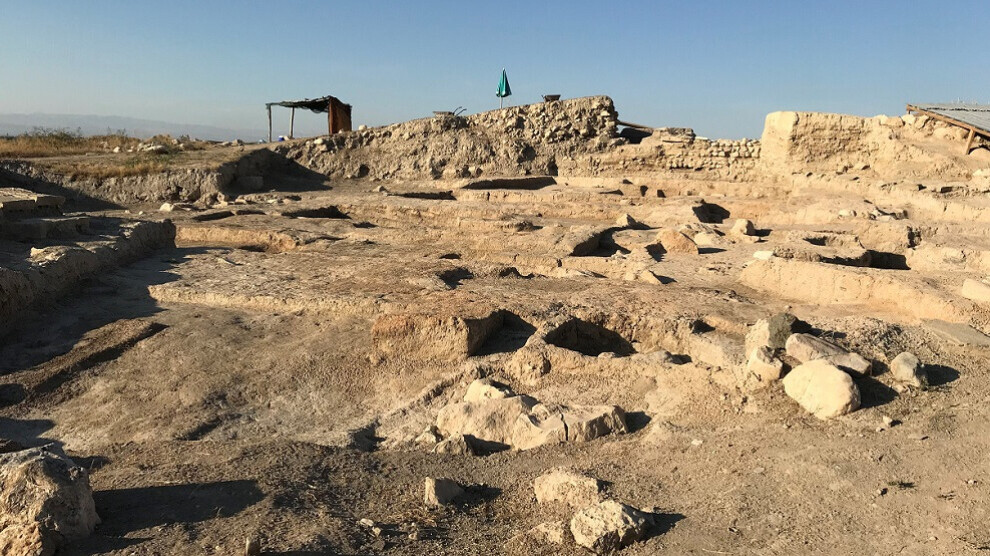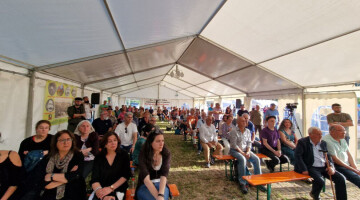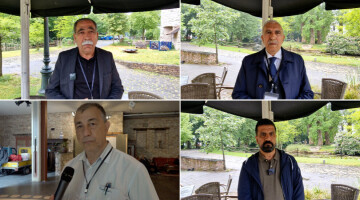In the excavation site of Arslantepe in the province of Malatya, the remains of houses built 5500 years ago have been uncovered, reported the excavation director. In addition to the four houses, 28 graves have also been discovered, which are believed to be a thousand years old.
Arslantepe is a fortified settlement in Northern Kurdistan since the third millennium BC. The Turkish name of the hill comes from the lion sculptures found here. The excavation site with finds mainly from the Bronze Age to the Neo-Hittite period is located six kilometers northeast of the Malatya province. The settlement mound has an oval shape extending from southwest to northeast. It has a surface area of about 4.5 hectares and rises about 30 meters above the surrounding area. The place was inhabited since the sixth millennium BCE, in the second millennium BC it belonged to the Hittite Great Kingdom, and from the late first millennium BC the center of the Late Hittite Kingdom of Melid was located here.
Finds from Arslantepe have been known since the late 19th century. Excavations took place in the 1930s, mainly exploring the Hittite remains, and since the 1960s by an Italian team, which also brought to light prehistoric and early historical architecture. In one of the later layers, the sculptures of Malatya were found. Since July 2021, the hill of Arslantepe has been a UNESCO World Heritage Site.














